Let me be clear: a tent heat is NOT a replacement for cold-weather camping gear. You are much better off investing in a good winter sleeping bag, a pad with a high R-value and quality base layers. If your tent heater doesn’t work for some reason, this is the gear which will keep you alive.
That said, a tent heater can make camping in cold weather more enjoyable. But you’ll need to get the right type of tent heater and know how to use it properly.
Jump to:
- Types of Tent Heaters
- What about Battery-Powered Tent Heaters?
- Is It Safe to Use a Heater in a Tent?
Also read: Guide to Winter Camping
Quick Answer:
If camping somewhere with an electric hookup, consider a heated blanket or mattress heater. This is much more efficient than trying to heat the air in an un-insulated tent. If you use an electric space heater in the tent, make sure you get a good 12g cord and only use it to take the edge off before going to bed and when waking up. Don’t leave it on all night.
If you don’t have an electric hookup or want to bother with cords, then an indoor propane heater is the way to go. Mr. Heater is one of the only brands which makes propane heaters safe to use in tents. They have features like automatic shutoff if tipped over or low oxygen. However, still bring a CO detector and don’t leave it on all night.
If you are serious about winter camping, then get an insulated tent with a wood stove jack. The setup is expensive and packing a stove is definitely not convenient, but it will keep you reliably warm.
If you are backpacking, get one of the UCO candle heaters. They can be safely left on all night and actually do a good job of warming your tent without causing condensation. .
Types of Tent Heaters
1. Propane Heater
When camping somewhere without an electric hookup, a propane heater is probably the best option. They are small, portable and propane is readily available.
Unless you have an insulated tent, you’ll want to choose a radiant propane heater and not a conductive heater. A radiant heater heats objects directly in front of them, so you don’t waste fuel heating the great outdoors.
Just make sure you are choosing a propane heater which is rated for indoor use. Worksite propane heaters, for example, produce too much CO to be used in a tent. More on that in the Safety section.
Best Propane Tent Heaters
The Mr. Buddy heaters are by far the most popular option for tents. They are safe to use indoors and all models have lots of safety features. Do NOT use a propane heater which says it is for “outdoor only”. These don’t burn cleanly and you can easily end up with CO poisoning.
| Image | Product | Features | Price |
|---|---|---|---|
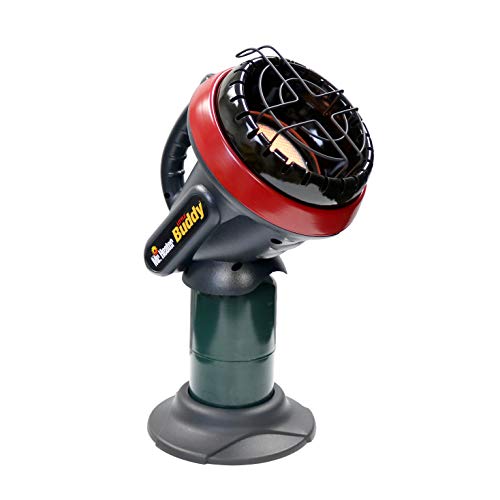 |
| Check on AmazonCheck at REI | |
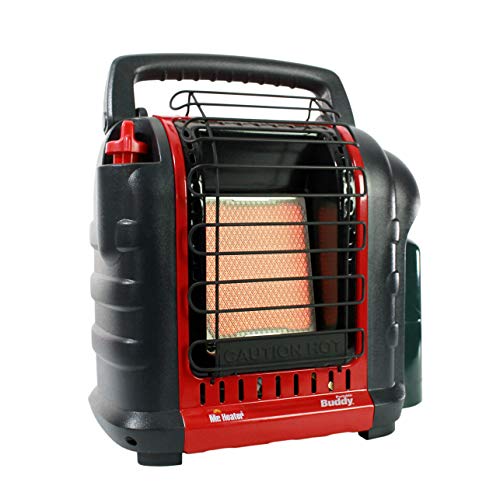 |
| Check on AmazonCheck at REI | |
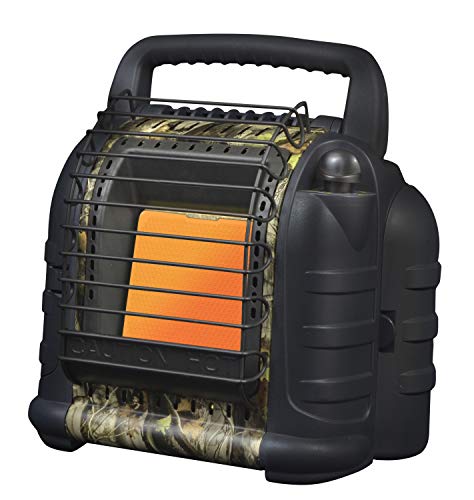 |
| Check on Amazon | |
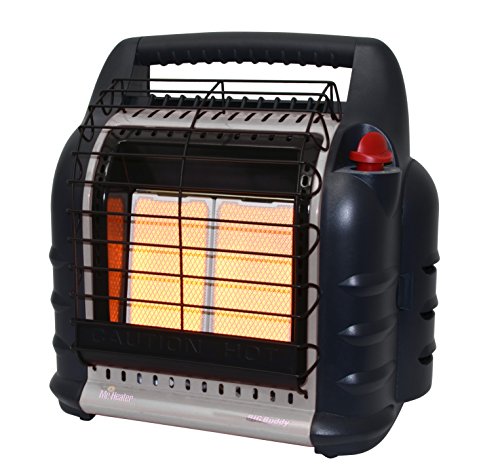 |
| Check on Amazon |
Tips:
- Get a 20lb tank adapter hose. The Mr. Heaters Buddy heaters can connect directly to a 1lb disposable tank. They will blow through the tank in about 3 hours on high. That gets expensive quickly! Get an adapter for a 20lb hose. You can run the heater for longer and for cheaper.
- Be prepared for condensation. Propane stoves release a huge amount of vapor as they burn fuel. This will collect on the sides of your tent as condensation, potentially causing everything to get wet. Read about how to deal with tent condensation.
- Avoid the urge to get a too-large gas heater for your tent. Otherwise the tent will get hot very quickly and you’ll have to turn off the heater. Then the tent will get cold quickly, so you’ll have to turn the heater back on. That means you’ll be constantly turning the heater on/off.
2. Catalytic Propane Heaters
Catalytic heaters also run on propane and produce radiant heat. However, they work in a different way than standard propane heaters. They produce heat with a flameless catalytic combustion. First a catalyst is preheated. In this case, it’s an electric heating grid with ceramic or platinum element inside. When the structure and gas come in contact with oxygen, it creates heat.
This method has several benefits:
- Burn clean and almost no CO produced
- No flame required so lower fire risk
- Combustion takes place at a lower temperature
- Less water produced during combustion, so condensation isn’t a big problem
The only real downsides of a catalytic heater is that they are expensive. They also have a bit of a learning curve since you need some extra accessories to use them, such as a regulator if you want to run on small propane tanks.
The Camco Olympian Wave-3 is basically the only option for catalytic heaters. It’s really popular for vans and RVs but also great for use in a tent. Coleman used to make one called the Xtremecat (shown in the picture above) but it isn’t available anymore.
| Image | Product | Features | Price |
|---|---|---|---|
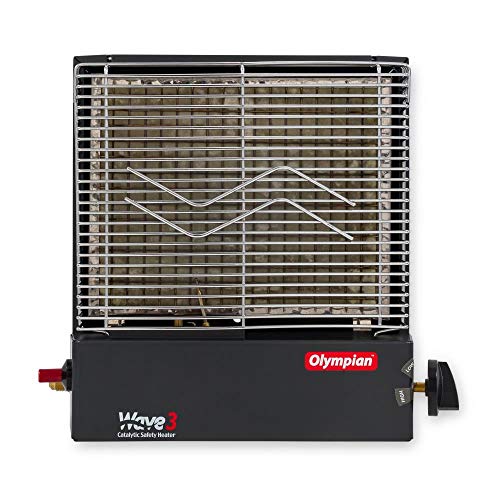 |
| Check Price |
3. Butane Heaters
If you don’t want to use propane, there are also some tent heaters which run off of butane canisters. They are easy to use, portable and produce a lot of heat quickly. However, compared to propane tent heaters, they can get expensive. This is because the heater will use up a can of butane very quickly. There also aren’t many options when in comes to butane heaters, and none of the options have good safety features.
Best Butane Tent Heaters
| Image | Product | Features | Price |
|---|---|---|---|
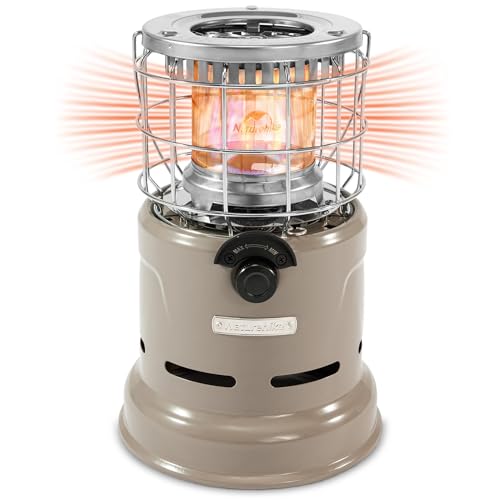 |
| Check Price | |
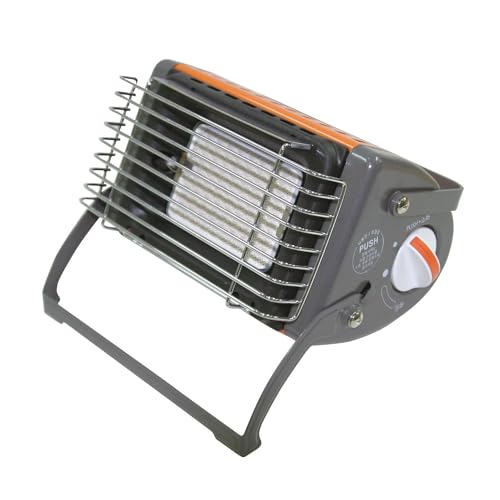 |
| Check Price |
4. Electric Space Heaters for Tents
There are a lot of different types of electric heaters that you could use for camping. However, the best option is a ceramic heater. These are newer types of convection heaters which contain a ceramic element inside. When electricity goes over the ceramic element, it is heated. This in turn heats an aluminum baffle which blows the heated air into the tent.
Compared to other types of space heaters, ceramic heaters are more efficient, heat up quickly, and are safer. The ceramic element also continues to emit some heat even after you’ve shut off the heater.
The downside is that ceramic heaters have a fan and can be very noisy. It’s worth paying a bit more to get one which is actually noiseless. Pay attention to whether they list the decible rating of the heater!
If you prefer a radiant heater (to heat your body instead of the air in the tent), then get an infrared heater. These are quiet and even more efficient since you aren’t heating the great outdoors.
Note about Campground Power Hookups
At many USA campgrounds, the electrical hookups are designed for RVs. This means that they are 30 or 50 amp hookups. Usually there is also a standard 15amp outlet is at the hookup, but not always.
If the campground doesn’t have a 15 amp outlet, you can use a 30 amp male to 15 amp female adapter to plug in your heater.
UK and EU Campers: Be warned that many campground hookups only have 5amp hookups. This will only provide about 1.15kW of power. You can still run a tent heater on it, but it will need to be one that uses 750watts or less.
Sizing an Electrical Heater
Most electric heaters are designed to heat entire rooms. They are going to be way to powerful for heating a small tent. This is a situation where you don’t want something too powerful: the heater could dangerously overheat.
To figure out what size electric heater you need for a tent, you’ll first need to figure out the square footage of your tent:
Standard Tent Sizes in Square Feet:
- 4 person tent = 55-70 sq feet
- 6 person tent = 90-100 sq feet
- 8 person tent = 120=130sq feet
As a general rule, you’ll need approximately 10 watts of power for each square foot. The equation is:
Total wattage / 10 = square feet that can be heated
Or
Total square feet x 10 = wattage required
So, that means a 750-watt heater would be enough to heat a 75 square foot tent. Or a 1,500 watt heater could heat a tent up to 150 square feet.
Best Electric Space Heaters for a Tent
| Image | Product | Features | Price |
|---|---|---|---|
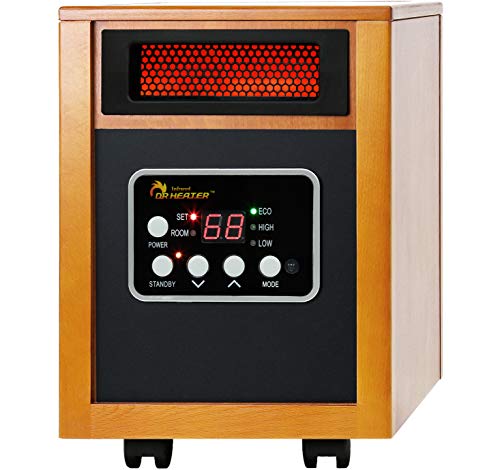 |
| Check Price | |
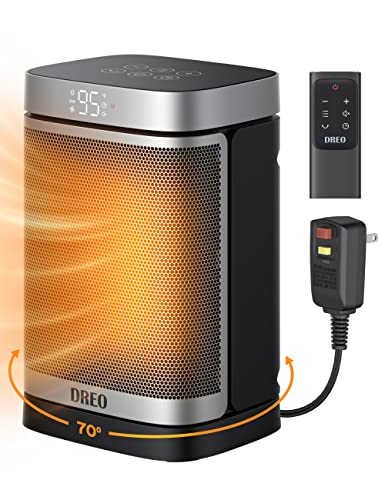 |
| Check Price | |
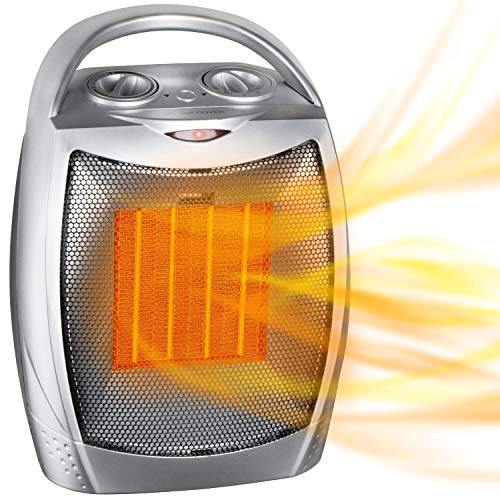 |
| Check Price |
5. Heated Mattress Pads and Electric Blankets
Compared to tent heaters, heated mattress pads and blankets are much more efficient because they heat your body and bedding directly instead of trying to heat the air inside a poorly-insulated tent.
This is a great solution if your main issue is feeling cold when you get into bed. Or, if you have trouble warming up after nighttime bathroom trips.
However, these will not heat your tent. That means you will still freeze your butt off when doing things like changing your clothes in the tent or getting ready for bed.
Also note that you should not use heated blankets or mattress pads with air mattresses. The heat can cause the air mattress to stretch and distort. Even a self-inflating pad might have some issues with so much heat directly on them. You are better off with a cot or a foam pad.
6. Hot Tent + Wood Stove
This is by far the warmest and most pleasant way of heating your tent. You can actually produce enough heat to warm a large tent. Ideally you would have an insulated tent to trap the heat. But, even if it’s just a canvas or nylon tent, the wood heat is strong enough to reach all corners of the tent and warm you without having to sit right next to the heater.
Another bonus is that you can keep the wood stove going all day and night (not an option with other tent heaters). The sound of a wood fire is really pleasant too.
However, it’s also the most inconvenient method of heating a tent. You will need a special tent with a stove jack (aka “Hot Tent”). These are usually EXPENSIVE as well as heavy and bulky. And then you also need the wood stove too. Even “portable” folding stoves are a pain to pack up. Aside from being heavy and bulky, you have to wait until they completely cool down before you can pack up camp.
You’ll also need to gather and process wood for fuel. Chances are this is what will ultimately keep you warm, not the fire itself. :p
Best Hot Tents and Stoves
| Image | Product | Features | Price |
|---|---|---|---|
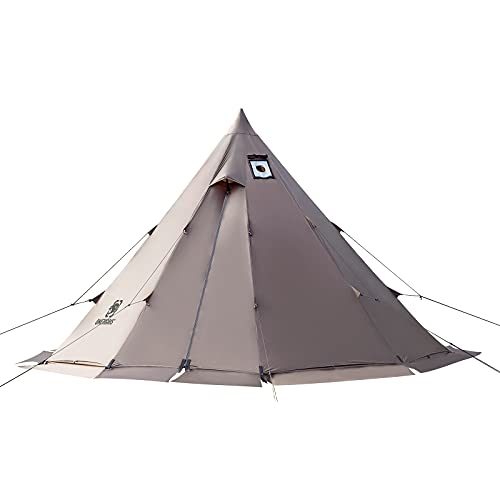 |
| Check Price | |
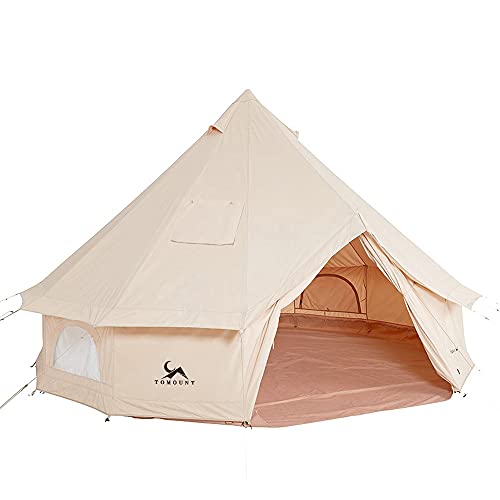 |
| Check Price | |
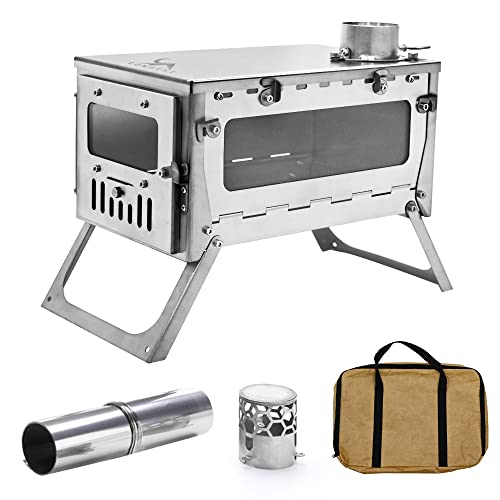 |
| Check Price | |
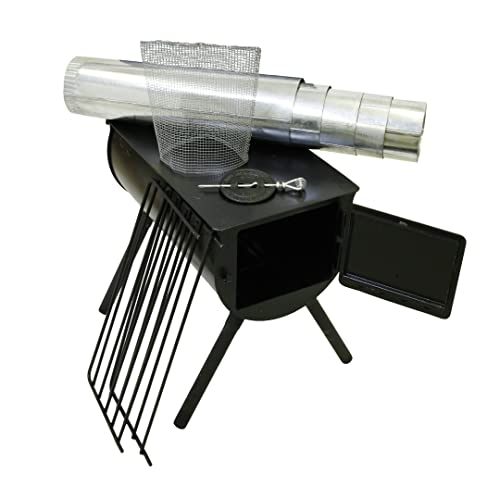 |
| Check Price | |
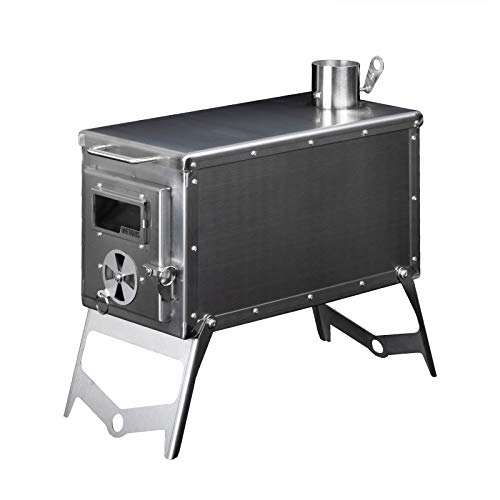 |
| Check Price |
7. Candle Heaters
A final option for heating your tent is to use candles.
Yes, candles.
On average, a tealight candle can produce around 30 to 50 watts of heat (approximately 170 to 260 BTU).
This is not enough to warm a large space or even bring the temperature of a tent up by much. However, when camping in very cold temperatures, it can make a big difference to keeping you comfortable.
Since other tent heaters are massive and bulky and require a large tent to be used safely, a candle heater is pretty much the only option for backpackers. As an added bonus, candle heaters actually reduce condensation instead of creating more.
So, how do you use a candle heater in a tent safely? The brand UCO makes several cool candle heaters. They hold the candle in a way so it is enclosed and will go out if tipped over.
Best Candle Tent Heaters
| Image | Product | Features | Price |
|---|---|---|---|
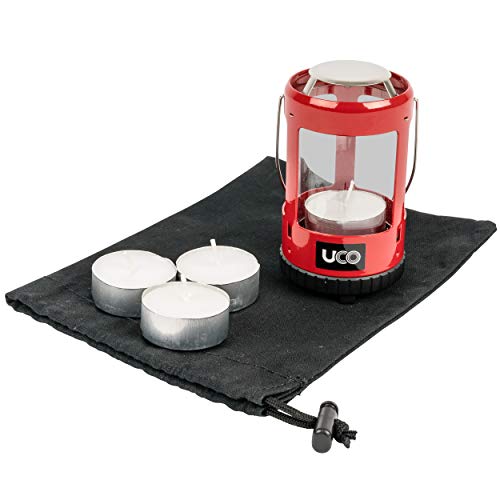 |
| Check on Amazon | |
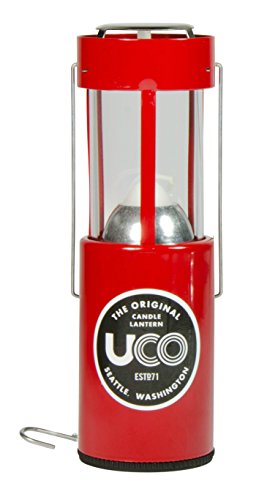 |
| Check on AmazonCheck at REI | |
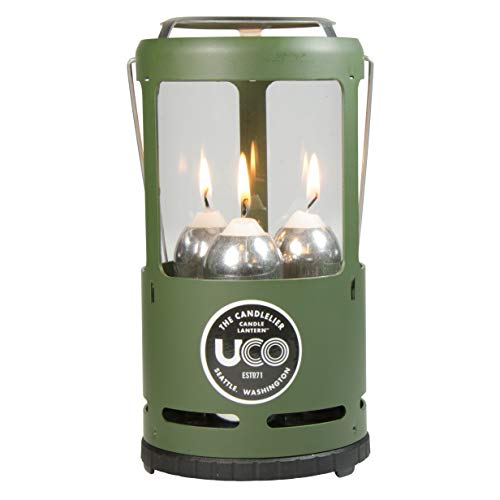 |
| Check on Amazon |
What about Battery-Powered Tent Heaters?
While there are some small battery-powered heaters, they simply aren’t practical for camping. They produce just a tiny amount of heat. The battery will drain long before you feel any real warmth.
Even beefy power stations don’t have enough capacity to run a space heater (also read: Are power stations worth it for camping?)
One possible battery-powered solution: heated shirts.
Heated shirts are designed for motorcycle riders and runners. They have a heating element in them which usually runs on a small battery. There are also some heated vests and long johns.
Since most run off of a power bank, you won’t need a power source at camp like with an electric blanket. Expect anywhere from 2-8 hours of heating with a 20,000mAh power bank.
As with an electric blanket, this isn’t going to heat your tent. However, it solves the issue of feeling cold when going to bed. Just snuggle with it in your sleeping bag to warm up.
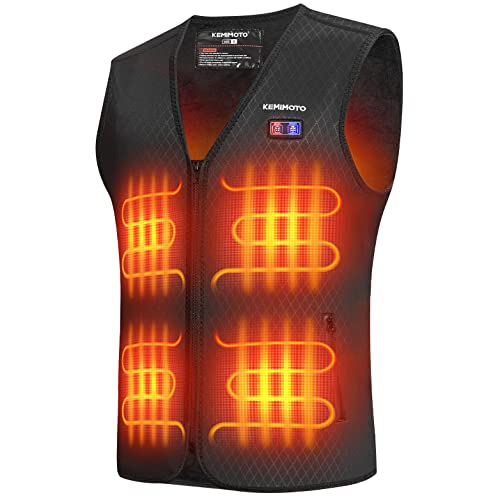
You could snuggle with this battery-powered heated vest shown above to warm up at night.
Is It Safe to Use a Heater in a Tent?
A lot of people are afraid to use tent heaters because of safety concerns. True, most heaters are not safe to use in a tent. But this doesn’t mean you should be scared to use a tent heater. You just need to take precautions.
The main ones you need to worry about are fire, electrocution, CO poisoning and oxygen depletion.
Fire Risk
With all types of tent heaters, there is a risk of fire. If anything touches the heater or topples it over (which is pretty easy in a crowded tent!), the heater could start a fire.
With electric heaters, you also have to worry about something blocking the airflow, causing it to overheat.
To prevent fires:
1. Don’t Sleep with Your Tent Heater On
With the exception of catalytic heaters and candle lanterns, tent heaters are not meant to be used for long periods of time.
Don’t sleep with your tent heater on! Rather, use the heater to take the edge off at night and in the morning or when you need to warm up after a nighttime bathroom trip.
Remember, it’s your gear which should keep you warm at night, not your heater!
2. Leave Two Feet of Space around the Heater
To make sure nothing accidentally falls on the heater or blocks it, leave at least two feet of space around the heater. (The Toledo Fire Department actually recommends three feet!).
That means no sleeping bags, pads, blankets, clothes, or anything near the tent heater!
3. Size Up Your Tent
In order to leave enough space around your heater, you may need a larger tent.
- 3 or 4-person tent for one person plus a heater.
- 4 or 6-person tent for two people using a heater.
- 8-person tent for a family of four or five using a heater.
- 10-person tent for a family of 6 or 7 using a heater.
4. Use the Right Cord
With electric heaters, it’s incredibly important that you use the right cord to connect it with the campground hookup. Otherwise you might have an electrical fire or get electrocuted.
Use these guidelines:
- Check the gauge of your extension cord: Most extension cords and power strips are only made for low-wattage devices. For portable heaters, you’ll need a cord that can handle higher wattage. For example, a 15amp heater will likely need at least a 14 gauge cord. This one is great.
- Only use cables rated for outdoor use: Otherwise moisture or the elements can damage the cord and result in a fire.
- Check the cable before use: Make sure there are no tears/cracks/damage before using.
- Don’t use power strips. They simply can’t handle the high energy demands of the heater and it could cause a fire.
- Never use 2–wire to 3-wire adapter: Two wire cords are not grounded and typically only meant for indoors. Never use one of these cords or an adapter so you can use one with a 3-pronged heater.
- Protect the connection point: There are covers you can buy for keeping water and moisture from getting in where heater and extension cord meet.
*The Sockitbox will waterproof your cord connections. Get it here.
5. Keep the Heater on a Platform
Good tent heaters will automatically shutoff if they tip over. However, it’s not smart to rely on automatic controls for something as serious as fire safety. You will want to:
- Put the heater on a platform. This keeps it off the uneven ground.
- Make sure the platform is heavier than the heater. This will keep it from becoming top-heavy and toppling over.
- Secure the heater to the platform. A good amount of electrical or duct tape around the base of the heater will do the trick.
Electrocution
With electric heaters, you need to be careful that the heater doesn’t get wet. You will want to make sure that the heater is elevated off of the ground in case water (such as from condensation) pools on the tent floor.
Another thing that can happen is that water from outside the tent hits the cord. It then run along the cord and into the tent, where it could touch the heater and cause an electrical shock.
To prevent this, make a drip cord. That’s simply a little piece of string which hangs down from the cord outside the tent. Water will drip down the cord instead of getting into the tent.
Carbon Monoxide Poisoning
With electric tent heaters, there is no risk of carbon monoxide poisoning. But, with any heater that works on combustion (butane, propane, wood…), carbon monoxide poisoning could occur.
Carbon monoxide is a deadly gas that builds up in your bloodstream. The gas is odorless and invisible, so you probably won’t realize that you are being poisoned until it is too late.
Symptoms include headache, nausea, and shortness of breath (amongst others). CO poisoning can cause permanent tissue damage or death. This is not a joke: hundreds of people die every winter because of heaters used indoors.
To prevent CO poisoning, follow these guidelines:
1. Only Use Indoor-Rated Heaters
Most gas and wood heaters are only rated for outdoor use. This is because they don’t have as complete combustion so more CO is produced.
Heaters rated for indoor use have more complete combustion, meaning less CO is produced. However, less is not the same as none. Even indoor heaters still pose a risk of CO poisoning!
2. Ventilate the Tent
The key to using a gas or wood heater safely in a tent is ventilation. Most two-layer tents already have pretty good ventilation in the mesh walls. However, if snow has built up around/over the tent, then CO gas won’t be able to escape nor will fresh oxygen be able to enter.
Canvas tents tend to have very bad ventilation. You’ll need to open any windows and probably keep the door cracked while using the tent.
How much ventilation do you need? You’ll have to check with the manufacturer’s specifications. The 3,800 Little Buddy heater, for example, requires 4 square inches of ventilation.
Doesn’t Ventilating the Tent Defeat the Point of Using a Heater?
No. Gas and wood heaters produce a lot of heat quickly. The amount of heat lost through a small opening is less than the heat produced. You’ll still be warmer with the heater on, even with the tent cracked open for ventilation.
3. Use a Battery-Operated CO Detector
CO detectors are fairly cheap. Get one and keep it in your tent while using a propane heater. The First Alert CO and smoke alarm is a reliable detector that works on batteries. Get it here.
Oxygen Depletion
In addition to CO emissions, you’ve also got to worry about oxygen depletion with gas heaters (this is not an issue with electric heaters). This is a completely separate issue from CO poisoning.
The reason is that burning fuel uses up oxygen in the space. The oxygen levels can get to dangerously low levels.
A good gas tent heater will have oxygen depletion sensors: if oxygen levels get too low, the heater will automatically shut off. You can also get a low-oxygen detector. Unfortunately, these are pricier than CO detectors. Since the risk isn’t as high as with CO poisoning, you can probably skip this detector.
Note: Some propane tent heaters won’t work at high altitudes because of the low-oxygen shutoff switch.
Some resources for this article include:
https://www.snowys.com.au/blog/can-you-use-a-gas-heater-in-a-tent/
http://www.electrical101.com/extension-cords.html
https://www.askthebuilder.com/extension-cords-size-chart/
https://www.sylvane.com/heater-buying-guide.html,
https://candles.org/candle-science/
https://tsapps.nist.gov/publication/get_pdf.cfm?pub_id=101159
Image credits:
“Tent camping at 15 degrees ain’t bad wit” (CC BY 2.0) by andyarthur,
“Interior of the Big Horn II Tent w/ Stov” (CC BY-NC-ND 2.0) by geojanitor,
“Catalytic heater keeps us warm” (CC BY 2.0) by sailn1


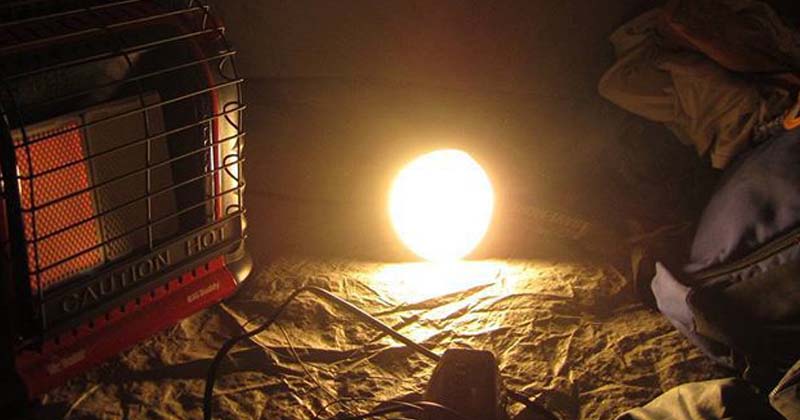
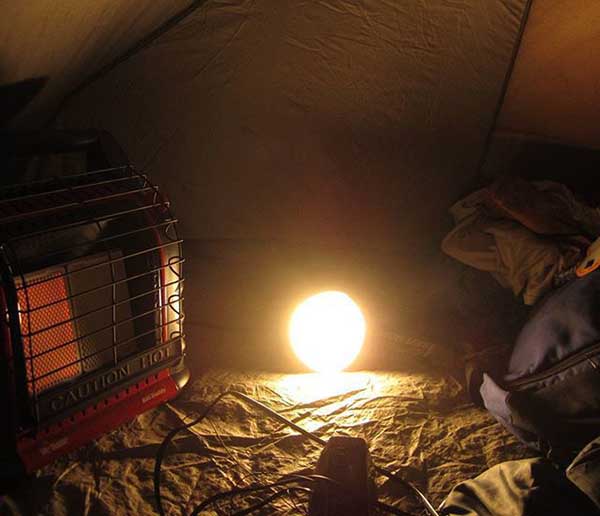
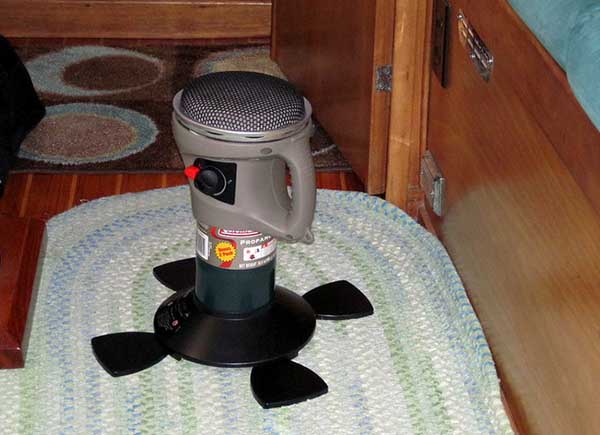
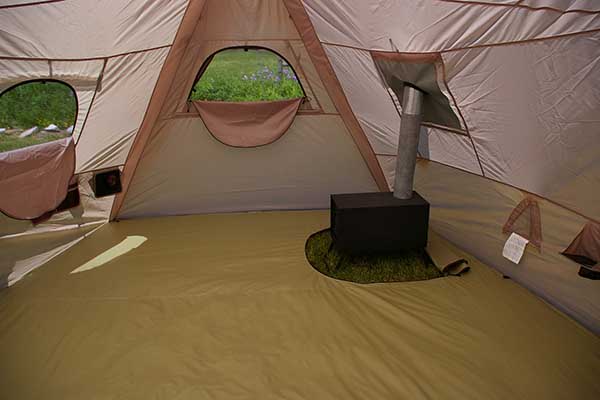
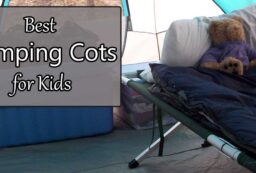
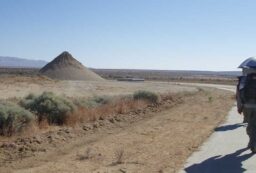
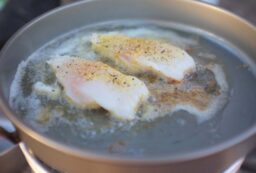







Post your comments